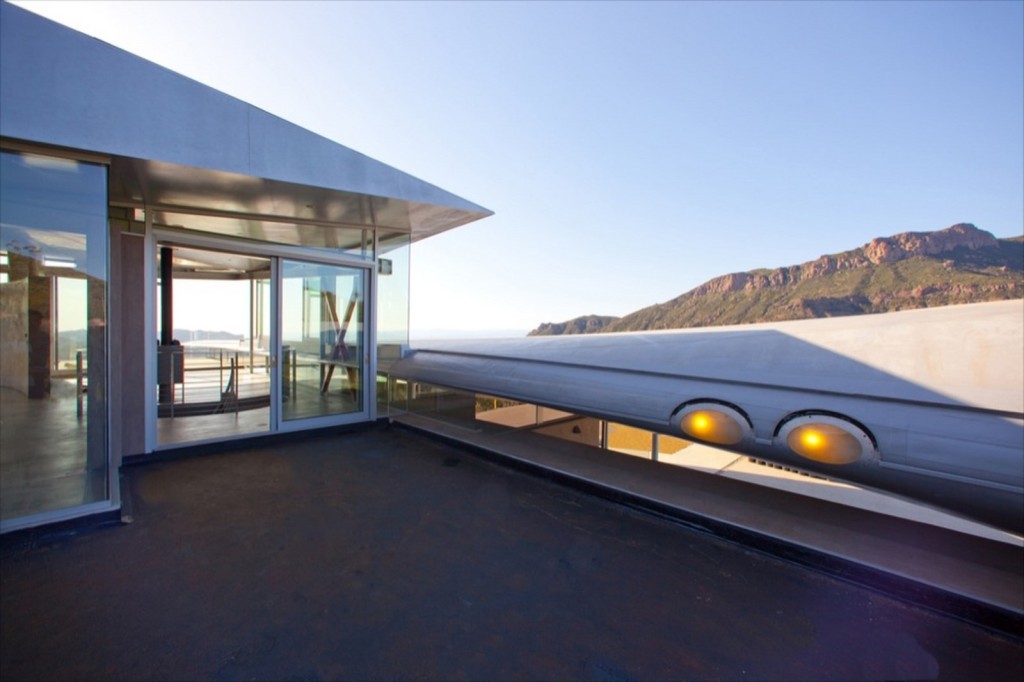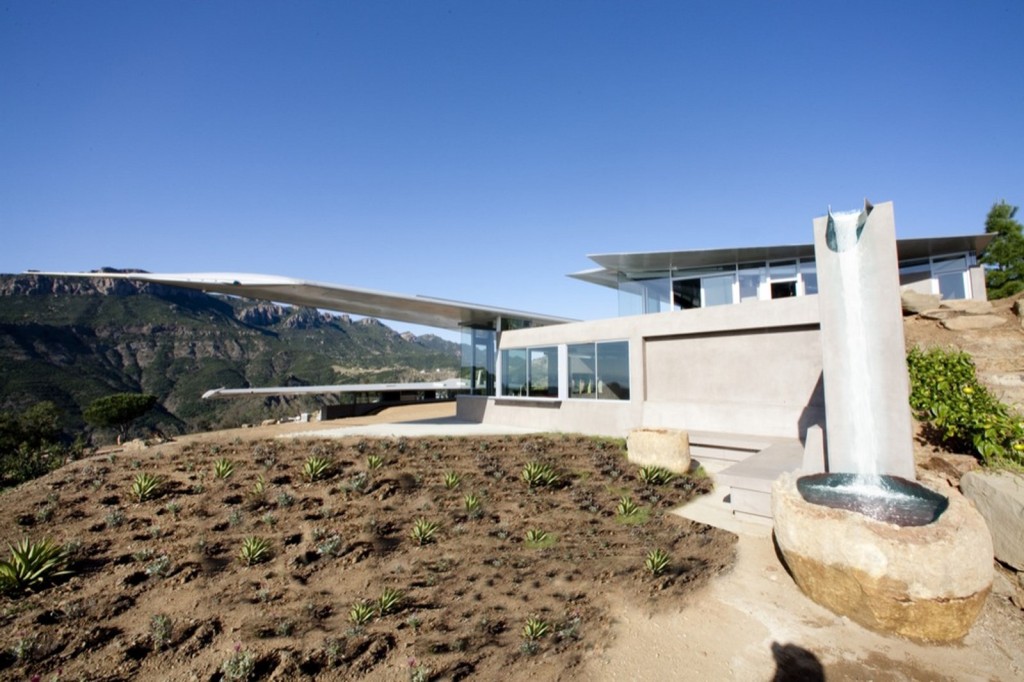Inspired by the remote hills of this Malibu property, David Hertz Architects wanted to come up with a design for this home that allow for unobstructed views of the beautiful mountain ranges surrounding the site. With the architects’ goal of incorporating found objects into their design and the homeowner’s vision of a floating, curved roof, the idea of using airplane wings as roof material surfaced. After conducting more research, it was decided that airplane wings would be ideal for maximizing the views from the home.
Architect: David Hertz Architects
Location: Malibu, California, United States
Project Area: 2,500 sqf
Project Year: 2011
Photographs: David Hertz Architects

By incorporating many of the existent retaining walls, the architects were able to keep the multi-level structure and minimize any additional impact to the existing topography and landscape. The home has rammed-earth walls that were cut into the hillside as well as strong concrete walls to support the roof. Simple steel brace frames allow the roof to “float” above the rest of the structure, while self-supporting glass walls give the homeowner spectacular views overlooking the city of Malibu.

Because the roof material was obtained from planes that had been retired to sit in the deserts of California, the architects were able to purchase the parts they needed at the low price of their raw material, aluminum. Although the pieces had to be flown in by helicopter, this method of transportation was a reasonable alternative considering the high cost of getting traditional labor and materials to the site.

The architects purchased the entire plane and used as many components as possible in the design, so as to not waste more than was necessary. The cockpit windows of the plane were reconstructed into a skylight, the home’s fire pit was crafted from the engine cowling and the first class cabin deck was made into the roof of the guest house. All of the plane parts came from a Boeing 747-200 aircraft.

The 747 represented the single largest industrial achievement in modern history and its abandonment in the desert makes a statement about the obsolescence and ephemeral nature of our technology and our society. As a structural and engineering achievement, the aircraft encloses a lot of space using the least amount of materials in a very resourceful and efficient manner. The recycling of the 4.5 million parts of the plane is seen as an extreme example of sustainable reuse and appropriation.
Prev Post
Eco Cube Proposal | A lab
2 Mins Read





